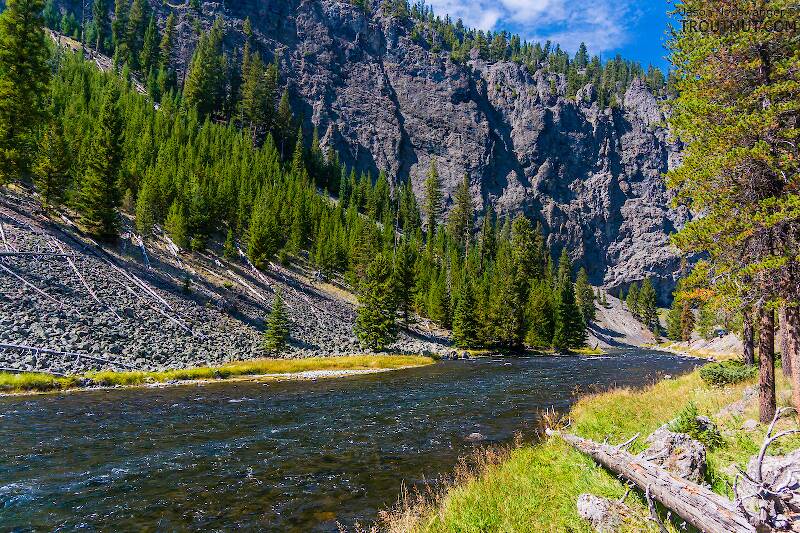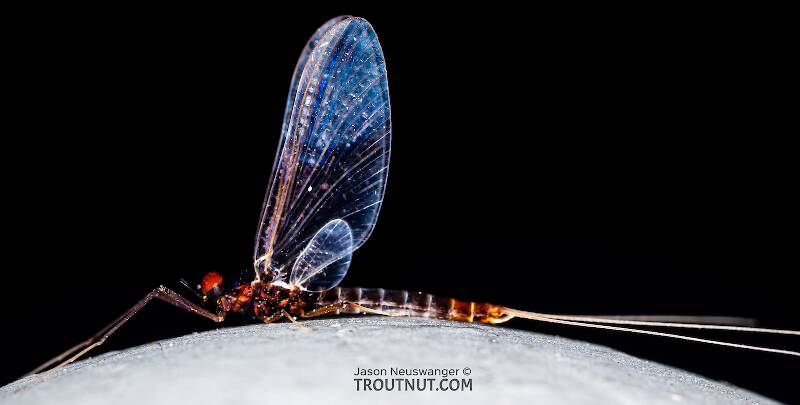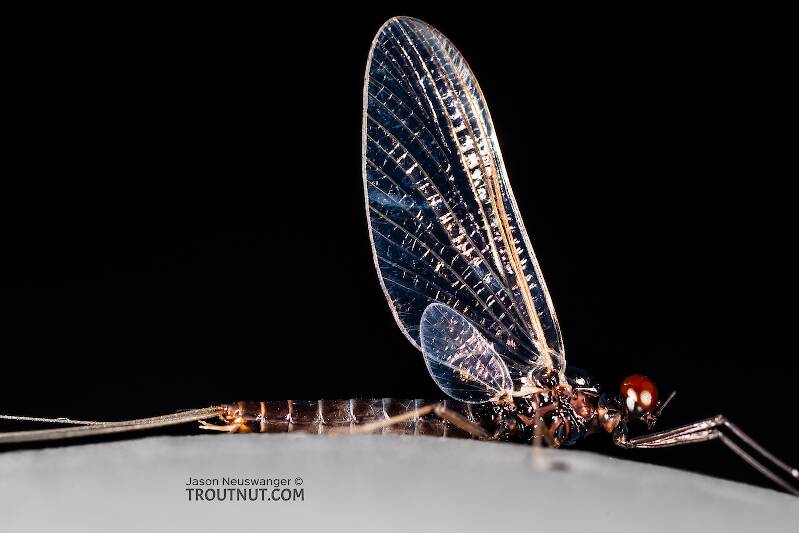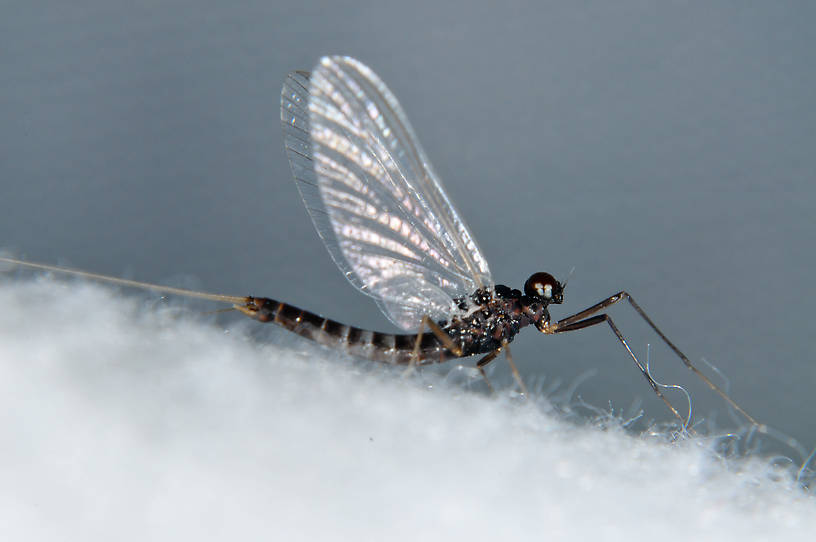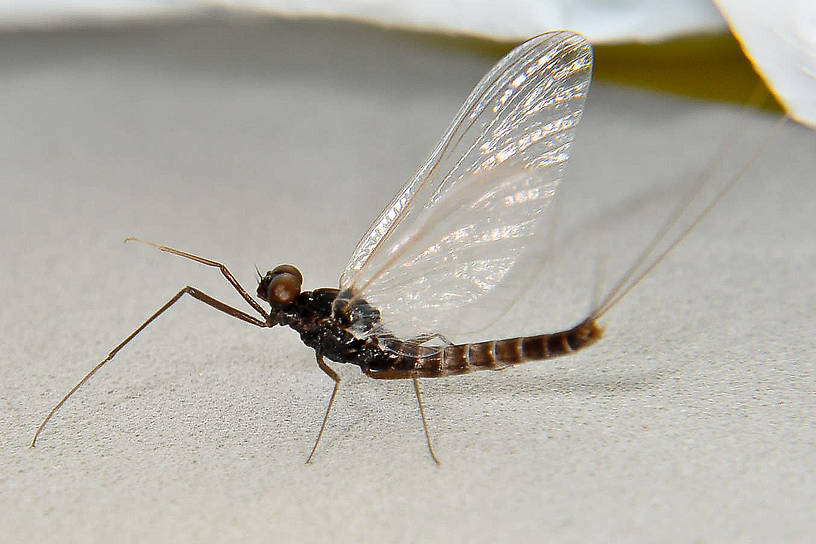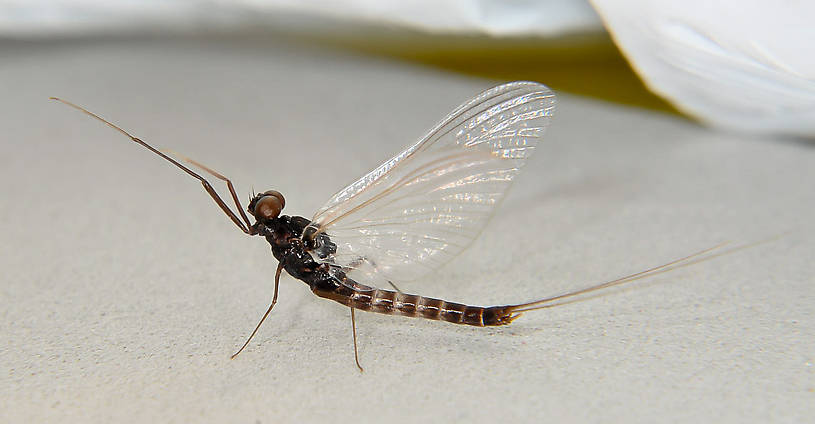
Blue-winged Olives
Baetis
Tiny Baetis mayflies are perhaps the most commonly encountered and imitated by anglers on all American trout streams due to their great abundance, widespread distribution, and trout-friendly emergence habits.


Mayfly Species Neoleptophlebia heteronea (Blue Quills)
Where & when
I collected one specimen on the Madison River, Montana on July 1st.In 9 records from GBIF, adults of this species have been collected during June (67%), May (22%), and August (11%).
In 8 records from GBIF, this species has been collected at elevations ranging from 6535 to 10387 ft, with an average (median) of 8671 ft.
Species Range
Physical description
Most physical descriptions on Troutnut are direct or slightly edited quotes from the original scientific sources describing or updating the species, although there may be errors in copying them to this website. Such descriptions aren't always definitive, because species often turn out to be more variable than the original describers observed. In some cases, only a single specimen was described! However, they are useful starting points.
Male Spinner
Wing length: 6-7 mm
This is a blackish species with brown-and-white ringed abdomen. The top of head and thorax are rich reddish brown, the sides duller. The fore legs are brown, with paler tarsi and the other legs are wholly pale. The wings are whitish with cross veins absent from most of the costal space, with only a few irregular ones in the stigmatic region. The basal segment of the abdomen and the three apical ones are brown. The middle segments are paler, whitish at the base with the rings broader on segments 4 and 5 and disappearing on 7, and the black spiracles have a broken line connecting them. Basal segment of the forceps rather broad, then nearly parallel-sided to the middle, then strongly tapering; the 3rd segment is nearly as long as the 2nd but much more slender. The penes are separated by a V-shaped notch. The sperm ducts terminate in a projecting tube that is longer than the spines at its outer side, and that has its outer cavinate margin revolute (see fig. 134).
Specimens of the Mayfly Species Neoleptophlebia heteronea
5 Male Spinners
Start a Discussion of Neoleptophlebia heteronea
References
- Arbona, Fred Jr. 1989. Mayflies, the Angler, and the Trout. Nick Lyons Books.
- Knopp, Malcolm and Robert Cormier. 1997. Mayflies: An Angler's Study of Trout Water Ephemeroptera . The Lyons Press.
- Needham, James G., Jay R. Traver, and Yin-Chi Hsu. 1935. The Biology of Mayflies. Comstock Publishing Company, Inc.
Mayfly Species Neoleptophlebia heteronea (Blue Quills)
Species Range
Common Name
Resources
- NatureServe
- Integrated Taxonomic Information System
- Global Biodiversity Information Facility
- Described by McDunnough (1924)

